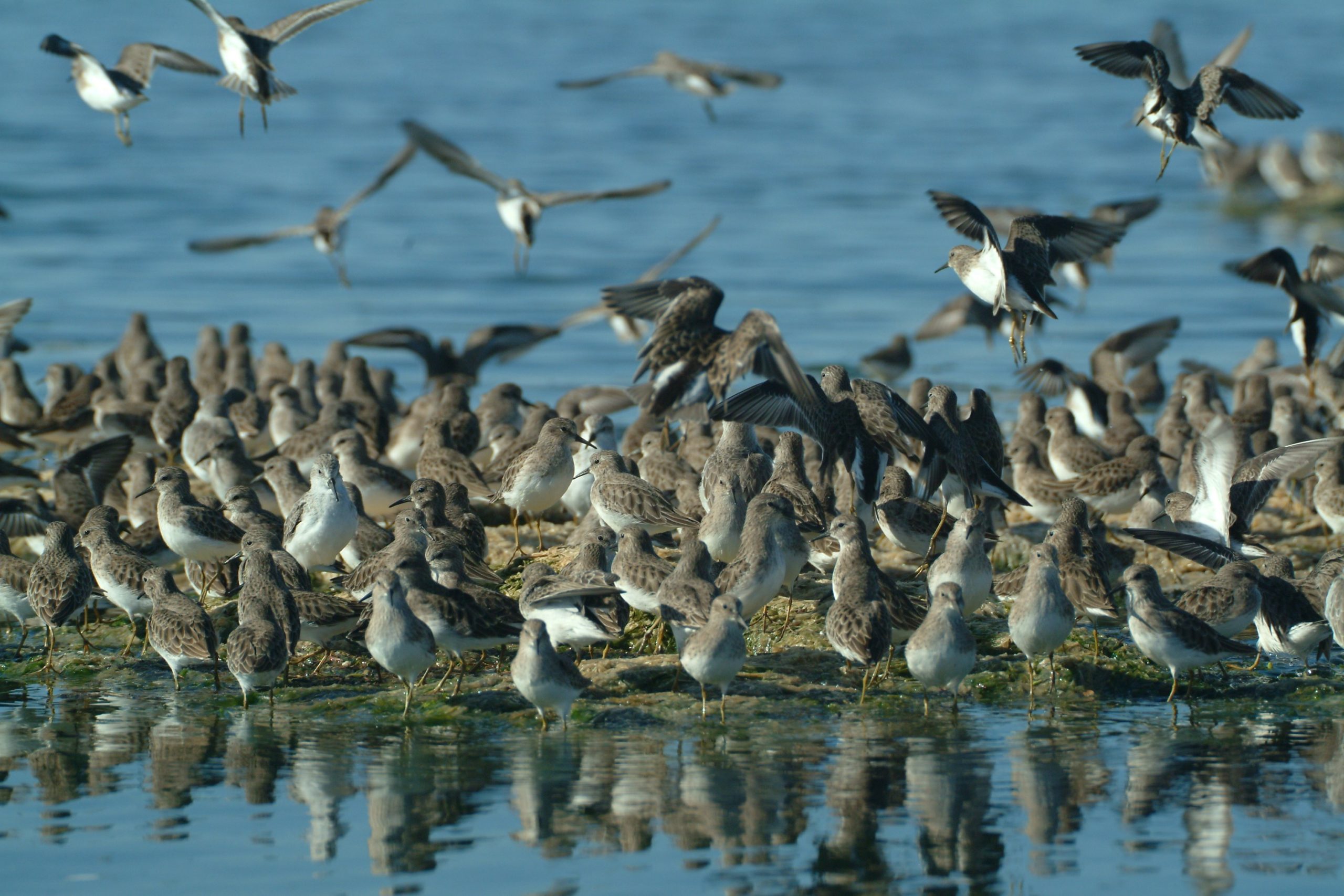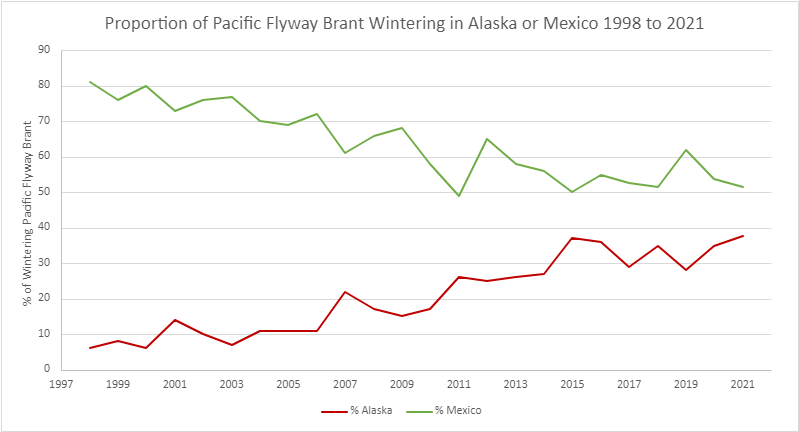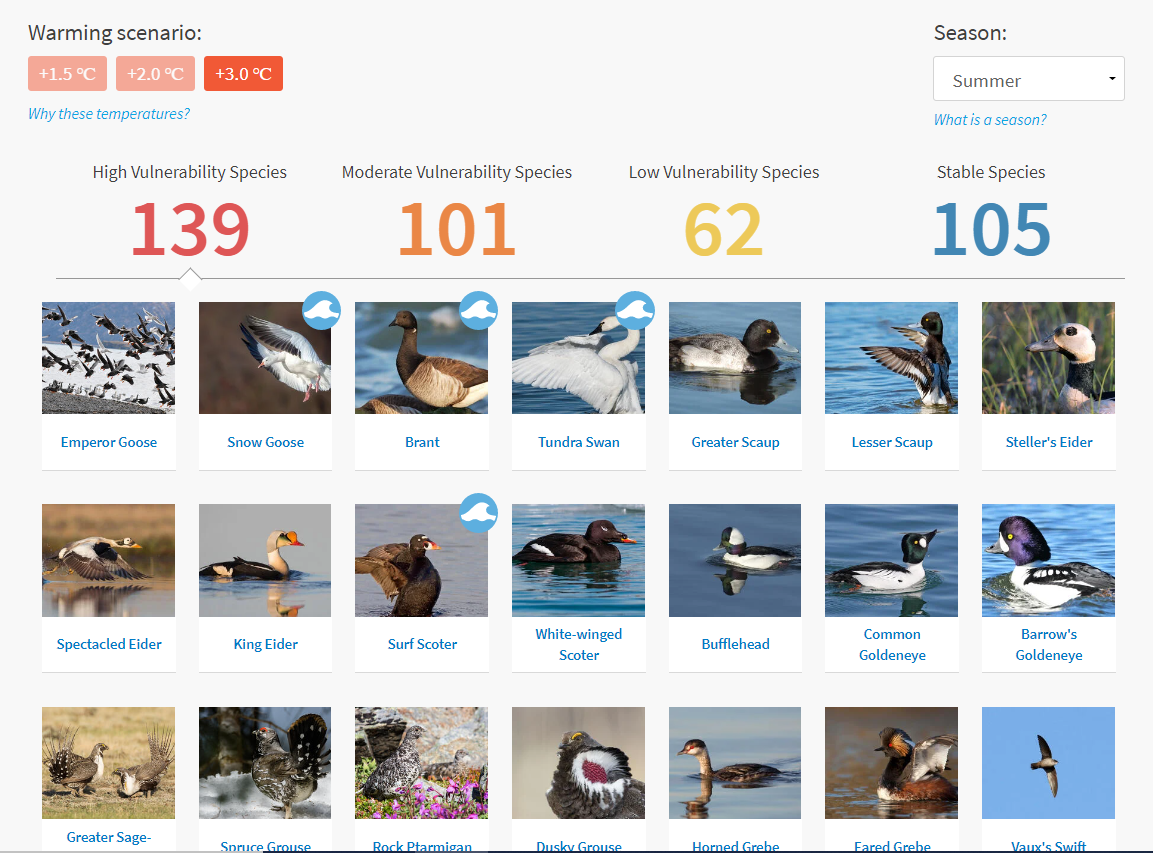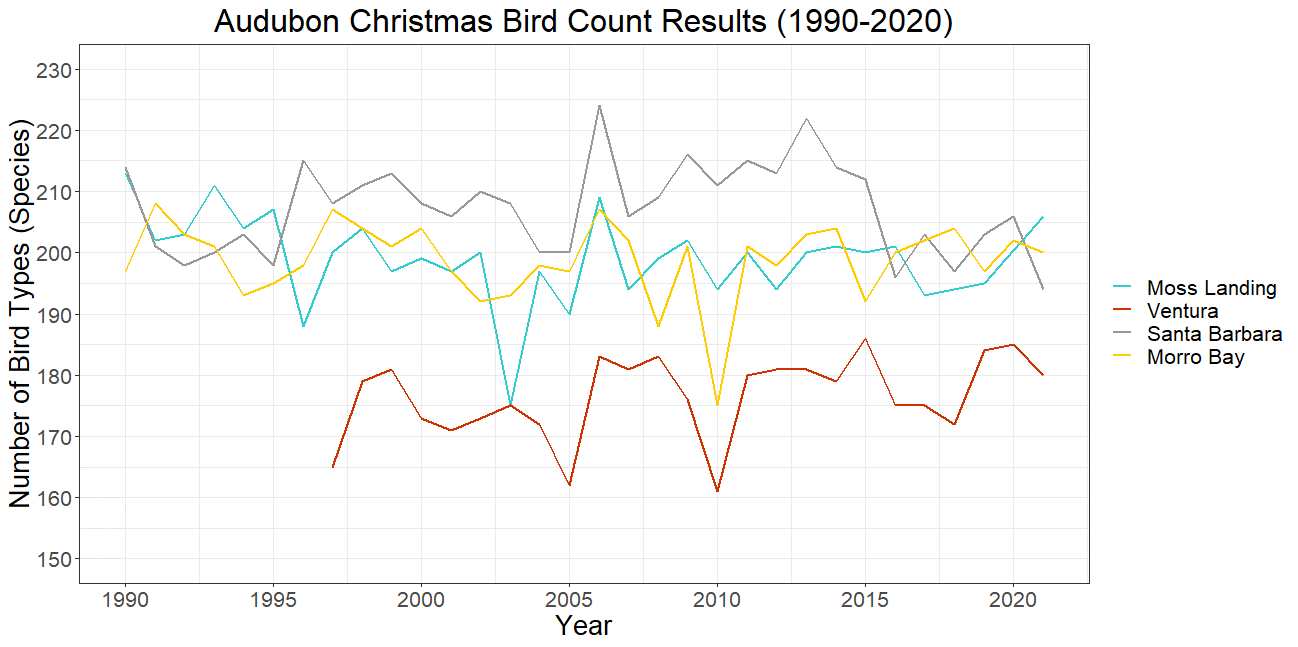Are bird populations that depend on the bay and surrounding lands stable?
Yes, the diversity of birds in the Morro Bay area appears stable, but some types of birds face difficult conditions or are changing their behavior due to forces such as climate change and habitat loss.

Morro Bay is well-known as a birder’s paradise, with more than 200 types of birds present in the wintertime. Birds serve as an indicator of environmental health, as a diversity of birds species can indicate that multiple habitats are doing well. While Morro Bay’s bird numbers have been relatively stable over the past twenty-five years, some species are facing challenges from factors such as habitat loss and climate change.
Challenges for the Western Snowy Plover
The western snowy plover is a small shorebird that nests directly on the sand. The federal government has determined that this species requires additional protection and management to improve its chance of survival. Plover nests are vulnerable to trampling, habitat loss, and being eaten by predators. Also, if plovers are disturbed too often, they can abandon their nests. California State Parks is responsible for managing plover habitat in our area. Surveys of plover nests in 2020 and 2021 saw further declines from the steep drop experienced in 2019.
What is the Pacific Flyway?
Morro Bay is one stop on the long journey more than a billion birds travel each winter from as far north as Alaska to the warm climates of Baja California and Central and South America. The flyway is over 4,000 miles long and up to 1,000 miles wide. While it is unknown exactly how birds navigate these long journeys, it is thought to be a combination of using the position of the sun and stars and through sensing the earth’s magnetic field. They also navigate via visual landmarks such as the coastline. Regardless of their methods of navigation, birds rely on areas like Morro Bay to provide clean water, food, and safe resting places along the way. To learn more about the Audubon’s Pacific Flyway Priority Birds, visit their website.
The Pacific Flyway Council is an administrative body that conducts management and monitoring of bird populations across the extent of the flyway in North America. Their monitoring includes population and habitat surveys, as well as banding to track migration patterns and behavior of birds. These surveys provide valuable data for tracking changes in migratory bird populations and establishing sustainable hunting regulations for game species.
Climate Change Impacts on Black Brant
These small stocky geese are a familiar sight in Morro Bay in late fall to early spring. Black brant are a migratory species, stopping by Morro Bay on their way to Mexico to escape the bitter cold of the Alaskan winter. They migrate along the Pacific Flyway, which is the north-south corridor for bird migration in the Americas.
In the past, the number of black brant in the Morro Bay estuary has fluctuated along with changes in eelgrass acreage, since it serves as an important food source for these birds. Even though eelgrass has made a significant comeback in the past few years, the Morro Bay brant population has not rebounded to the same degree.
This decline in the Morro Bay brant population is due at least in part to the impact of climate change. As the Alaskan Peninsula continues to experience warmer winters, more brant are opting to skip the arduous 3,000-mile journey to warner climates and instead remain in Alaska. This means fewer brant are stopping by Morro Bay to forage on eelgrass.

Fortunately for brant, the decline observed in our local population is not reflective of the population along the entirety of the Pacific Flyway. The Pacific Flyway population has remained relatively stable, meaning that the change in migration pattern has not yet impacted the brant population as a whole. However, the lasting impacts of climate change have yet to be seen.
Climate Change Impacts on Bird Survival

Audubon’s Survival by Degrees webpage shows which bird species along the Pacific Flyway are most vulnerable to climate change. https://www.audubon.org/climate/survivalbydegrees/flyway/pacific
Audubon has ongoing efforts to better understand how our changing climate might impact birds. In their 2019 report, Survival by Degrees: 389 Bird Species on the Brink, they analyze the vulnerability of birds across North America. Almost two-thirds of America’s birds are vulnerable to climate change, and in North America, 37% of birds are at a high risk of extinction. Birds typically respond to climate change by shifting their ranges, but the current relatively rapid rate of change leaves birds vulnerable. The ranges of 120 species that nest or winter in San Luis Obispo County are threatened by the effects of climate change. A goal of the report is to determine how different climate change scenarios impact habitats and species. Slowing climate change to reduce warming could reduce the vulnerability of many species of birds.
In a recent report from 2021, Audubon draws multiple parallels between habitats that harbor bird populations and those that have the potential to reduce greenhouse gas emissions if properly maintained and restored. Habitats such as forests, grasslands, and wetlands sequester over 100 billion tons of carbon in the United States and have the potential to store twice as much if the proper strategies are implemented. Protecting these habitats will simultaneously benefit numerous species of birds at risk from the warming climate. While the effective management of these habitats will not bring climate change to a halt, it can significantly mitigate its negative impact.
Regional Bird Populations
Each December, the National Audubon Society hosts a Christmas Bird Count event where birders across the nation gather to count birds in their local area. The effort is the longest-running citizen science bird project.
Locally, the count is organized by Morro Coast Audubon Society. The 2021 Morro Bay Christmas Bird Count was held on Saturday, December 18 and was conducted within a 15-mile diameter circle encompassing the estuary, much of the watershed, and areas north of Morro Rock along the strand. The count recorded 200 species, which is slightly over the average count for data going back to 1980. Over 43,000 birds were counted, which is about 9% less than the average of counts since 1980. Since the surveys began in 1948, 321 unique species have been recorded, with the addition of two new species during the 2021 count. For full details on the survey and to see trends in the data from our area and beyond, visit the Audubon Christmas Bird Count website.

Data Notes
The Regional Bird Population data was from the Audubon Christmas Bird Count: https://www.morrocoastaudubon.org/p/mcas-christmas-bird-count.html and https://drive.google.com/file/d/1XzyYX3vmbawZmNj5NPCTU-zEwsdNed4Z/view
Western snowy plover data is collected and analyzed by San Luis Obispo Coast District of California State Parks, as part of recovery efforts for this federally threatened species. For more information on Western Snowy Plovers: https://www.fws.gov/arcata/es/birds/WSP/plover.html
Local brant data is collected by John Roser, local biologist and citizen scientist, using standardized methods. The information came from his report titled Brant Counts for Morro Bay, California 2020 – 2021 Season.
Information about brant migration patterns is based on U.S. Fish and Wildlife Service data: https://pacificflyway.gov/Documents/Databook.pdf
Pacific Flyway information: https://openspacetrust.org/blog/pacific-flyway/
Pacific Flyway Council: https://pacificflyway.gov/Monitoring.asp
Audubon’s report on climate change impacts on birds: https://www.audubon.org/sites/default/files/climatereport-2019-english-lowres.pdf
Audubon’s report on habitat protection and climate resilience: https://nas-national-prod.s3.amazonaws.com/audubon_naturalclimatesolutions_june2021_hi_res.pdf